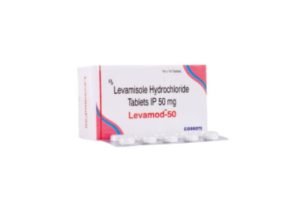
Minocycline: Full Review
Minocycline is a broad-spectrum antibiotic from the tetracycline class, closely related to doxycycline. It is known for its use in treating various bacterial infections, particularly those affecting the skin, respiratory system, and urinary tract. Minocycline also has anti-inflammatory properties, making it useful in treating non-infectious conditions such as rheumatoid arthritis.
1. Mechanism of Action
Minocycline, like other tetracyclines, works by inhibiting bacterial protein synthesis. It binds to the 30S ribosomal subunit, preventing the addition of amino acids to the growing peptide chain, thereby stopping bacterial growth. It is bacteriostatic, meaning it halts bacterial multiplication rather than killing bacteria outright.
2. Uses
Minocycline is used to treat a wide variety of infections caused by susceptible organisms. It is particularly effective against Gram-positive and Gram-negative bacteria, as well as atypical bacteria. Common indications include:
- Acne vulgaris (severe cases)
- Respiratory tract infections (e.g., pneumonia, bronchitis)
- Skin infections (e.g., cellulitis)
- Urinary tract infections (UTIs)
- Sexually transmitted infections (e.g., chlamydia)
- Rheumatoid arthritis (due to its anti-inflammatory properties, as an adjunctive treatment)
- Meningococcal prophylaxis (preventing the spread of bacterial meningitis)
- Tick-borne diseases (e.g., Rocky Mountain spotted fever, Lyme disease)
- Methicillin-resistant Staphylococcus aureus (MRSA) infections
Minocycline is often chosen when first-line treatments are ineffective or contraindicated due to resistance or allergies.
3. Dosage and Administration
Minocycline is available in various forms, including capsules, tablets, and intravenous preparations.
- Acne treatment: 50–100 mg twice daily.
- Infections: 100 mg every 12 hours or as directed by a healthcare provider.
- Rheumatoid arthritis: 100 mg twice daily.
It is typically recommended to take minocycline with a full glass of water to prevent esophageal irritation, and it can be taken with or without food, although taking it with food can help reduce gastrointestinal side effects.
4. Contraindications
Minocycline is contraindicated in:
- Pregnant women: It may affect fetal bone and tooth development.
- Children under 8 years of age: Like other tetracyclines, it can cause permanent discoloration of teeth and impair bone growth.
- Patients with hypersensitivity to minocycline or other tetracyclines.
5. Side Effects
Common side effects of minocycline include:
- Gastrointestinal discomfort: Nausea, vomiting, diarrhea, and epigastric pain.
- Photosensitivity: Increased risk of sunburn with sun exposure.
- Vertigo or dizziness: Minocycline is more likely than other tetracyclines to cause dizziness or vertigo.
- Skin pigmentation changes: Prolonged use may lead to blue-grey discoloration of the skin, nails, and gums.
- Teeth discoloration: More likely with long-term use, especially in children.
- Autoimmune reactions: Rarely, long-term use has been associated with drug-induced lupus or autoimmune hepatitis.
6. Drug Interactions
- Antacids: Containing calcium, magnesium, or aluminum, they can reduce minocycline absorption.
- Iron supplements: May reduce the effectiveness of minocycline.
- Oral contraceptives: Minocycline may reduce the effectiveness of hormonal birth control.
- Blood thinners (e.g., warfarin): Minocycline may enhance the effects of anticoagulants, increasing the risk of bleeding.
- Retinoids: Combining minocycline with retinoids can increase the risk of intracranial hypertension.
7. Special Precautions
- Photosensitivity: Patients should be advised to avoid excessive sunlight exposure and to use sunscreen regularly.
- Vertigo/Dizziness: Minocycline can cause vestibular symptoms (dizziness, light-headedness), especially in women. Caution should be taken when operating machinery or driving.
- Kidney and liver function: Use cautiously in patients with impaired renal or hepatic function. Dose adjustments may be required.
- Pigmentation: Long-term use can lead to skin and dental pigmentation changes, particularly in areas exposed to the sun.
8. Resistance
Bacterial resistance to minocycline is a growing concern, particularly among strains like Staphylococcus aureus. However, it remains effective for treating infections caused by multidrug-resistant organisms, including MRSA. Minocycline’s ability to penetrate tissues, including the central nervous system, makes it a valuable option for certain hard-to-treat infections.
9. Storage and Stability
Minocycline should be stored at room temperature, away from moisture, heat, and direct sunlight. Like other tetracyclines, outdated minocycline should not be used as it may degrade and become toxic, potentially causing a condition called Fanconi syndrome.
10. Summary
Minocycline is a versatile antibiotic with broad applications in treating bacterial infections and inflammatory conditions like rheumatoid arthritis. While it shares similarities with other tetracyclines like doxycycline, it is unique in its ability to treat resistant infections such as MRSA and its anti-inflammatory properties. However, it carries a higher risk of side effects such as vertigo and skin pigmentation changes, particularly with long-term use.
As with all antibiotics, minocycline should be used judiciously, and patients should follow medical advice closely to minimize risks and maximize benefits.







